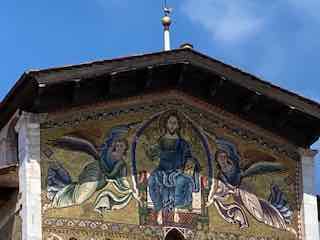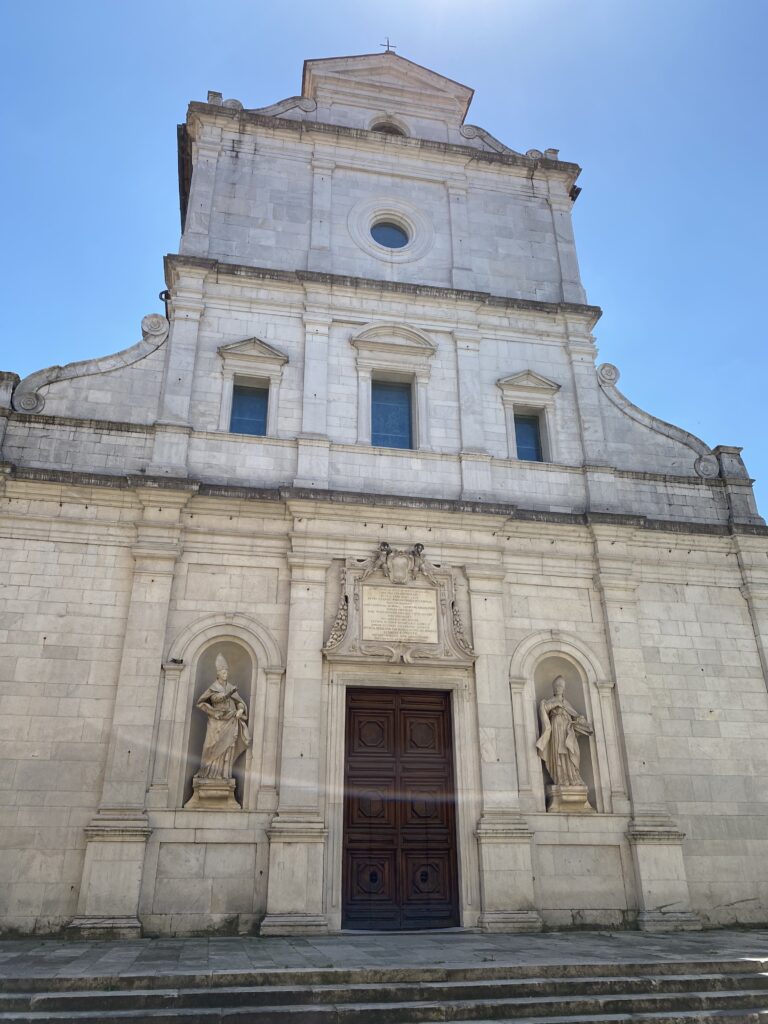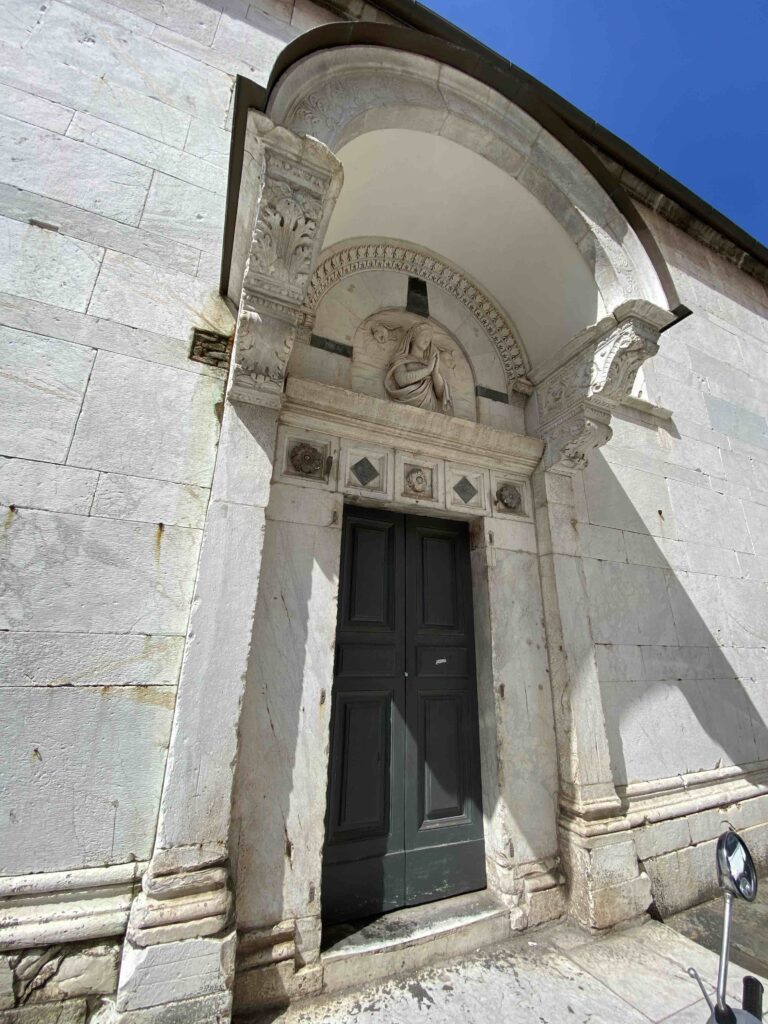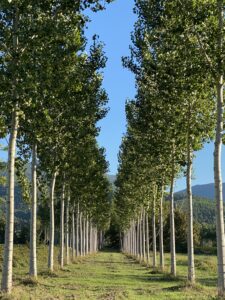
In places I have lived in Firenze and Siena, the local church played a massive role in one’s identity as a Florentine or Senese. The parades in Florence for the ancient game of calcio fiorentino pit players from the churches of Santo Spirito, Santa Maria Novella, San Giovanni and Santa Croce in matches which are a violent variation on football and rugby. In Siena, parishes spend all year in preparation for the parades, feasts, and horse racing of the Palio. But Lucca with its typical lack of ostentatiousness and reserve, eschews the influence of the Church. In Firenze, hailing from the neighborhood of San Lorenzo meant you were working class, but in Lucca, neighborhoods instead seem to have earned their names by reputation. One of the Lucca’s poorest neighborhoods is named Pelleria, after the leather tanning works once housed there, and as a snide reference to the “skin trade” of prostitutes who lived there. No one refers to it as San Tommaso after its parish church, even if it boasted a famously activist anti-fascist priest. In another neighborhood is the 13th century church of San Francesco, an elegantly simple and immense structure with a gorgeously restored convent and cloister where some of the city’s most notable citizens are buried, including Paolo Guinigi and Ilaria del Carretto. Yet what is its neighborhood? Il Bastardo, which has clear connotations.
Perhaps the fact that there really are so many structures built as churches within the city walls demonstrates that Lucchesi didn’t feel the need to swear allegiance to any one in particular. Or perhaps it was a sign of prestige: to be able to build a church of one’s own meant one had “made it” and was grateful to God, not necessarily to a particular sect. Their existence seems to back up the Lucchese belief that to trust is good, but to not trust is better. Even before the Reformation, many Lucchesi were independent thinkers who questioned the Pope’s authority and who famously made a great living by usury, though banking was considered an heretical practice. With the Inquisition, many Lucchese families fled to Switzerland to avoid persecution, since religious extremists representing the pope’s temporal authority (like Savonarola) made a practice of burning those they convicted of heresy. While now the majority of Lucca’s churches are closed or deconsecrated, many continue to serve as gracious auditoriums or exhibit spaces.
Via San Paolino, 6, where my Mom was born and grew up, was one hundred steps from the church of San Michele, with its ornate romantic facade, and 170 steps from her parish church: the baroque San Paolino, for which the street is named. To her, each had a very distinct personality. She never considered attending San Paolino on Sunday because the women who attended mass there always dressed to the hilt to show off, yet Mom was very proud that she received a silver medal for being the best catechist there. She said that in the build-up to the war, though, the priest asked her to give the medal back “for the cause” and that they’d return it to her later. She never got her medal back, which always irritated her. She had two copies of the paper certificate in her safety deposit box. When one considers how few things she was able to bring to the United States with her, it is clear how much the award must have meant to her.

Mom liked to attend San Michele, and married there at 7 o’clock in the morning on November 11, 1948 – early on a weekday to avoid curious onlookers. The reception was held in their living room, and catered by the family’s Caffe Savoia. Mom was proud that so many of her friends and her parents’ friends stopped in, including the Count Sardi, who gave her a small wooden bowl with felt flowers to remind her of their many hikes into the mountains with the Alpine Club of Italy (CAI). Her brother, Carlo, gave her a copy of I Chose Liberty, a best-seling expose` of Soviet abuses during WWII by Viktor Andrijovyc Kravcenko, a Soviet defector who was later murdered, it was speculated, by the KGB.
To be baptized in Lucca, however, there was no choice: everyone had to go to the church of San Frediano, at the other end of fashionable via Fillungo, to be dipped in its famous 12th century baptismal font. San Frediano has a Byzantine mosaic facade of the seated figure of Jesus which, ironically, is rather frightening to young children — His eyes look as if they are following you as the display glitters golden in the sunlight. The 13th century designers achieved this effect by making the mosaic lean forward from Jesus’ shoulders up – a clever trick to accomplish perspective without mathematics.

Mom remembered that she and her sister, Gina, first had their Christening and then their first Communion, the same year. While the order of the sacraments didn’t make much sense to anyone, their mother was happy that they could wear the same beautiful, intricately laced white dresses to both events. Little did she suspect that after a summer at the beach and at a country house in Vicopelago, my mother would have grown two inches, requiring a major alteration to her dress. It was good that there were so many excellent seamstresses in Lucca, and the children’s was the best. She skillfully added an insert of handmade lace, just in time, and the girls were ready to join their godmother in a gleaming black horse-drawn carriage to attend their first communion in San Paolino.
My mother noted that Nonno Gino attended mass very frequently and was grateful for the DDT that American GIs distributed generously, so that the fleas that sought him out in church were finally eradicated for good. His favorite church of all, for its simplicity and authenticity, was tiny Sant’Alessandro, positioned just between the Bedini home and the back entrance of the Caffe Savoia used by the pastry chef. Being the city of 100 churches, it isn’t so surprising I suppose, that such a lovely intimate church could squeeze its way into the neighborhood too.

- For a map of the locations mentioned, please click on the link below:
- “Parishes” Locations

